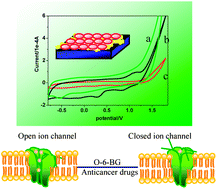Nano-p–n junction heterostructure TiO2 nanobelts for the electrochemical detection of anticancer drug and biointeractions with cancer cells
Abstract
Nano-p–n junction heterostructures based on TiO2 nanobelts with enhanced (001) facets were produced by assembling p-type semiconductor NiO


 Please wait while we load your content...
Please wait while we load your content...